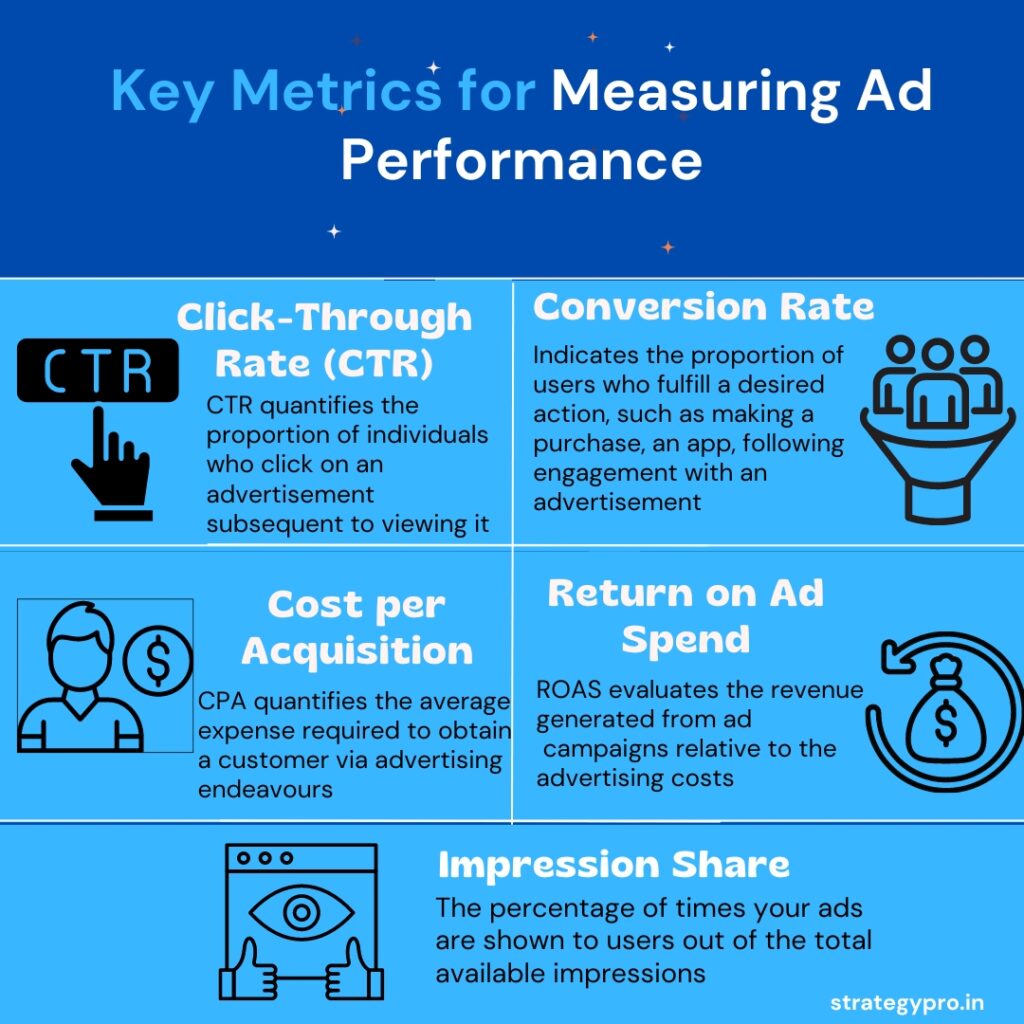
Key Metrics for measuring ad performance for Small Businesses
- By admin
In today’s digital age, where competition for consumer attention is fierce, measuring the performance of advertising campaigns is crucial for businesses striving to optimize their marketing strategies. Navigating numerous metrics can be daunting, making it challenging to discern which ones are significant. Understanding the key metrics for measuring ad performance is paramount for making informed decisions and maximizing return on investment (ROI).
Some of these essential metrics:

Click-Through Rate (CTR):
CTR quantifies the proportion of individuals who click on an advertisement subsequent to viewing it. It’s a fundamental metric that indicates how compelling your ad is to your target audience. A high CTR signifies relevance and engagement, while a low CTR may indicate a need for adjustments in targeting, messaging, or creative elements.
Conversion Rate:
The conversion rate indicates the proportion of users who fulfil a desired action, such as making a purchase, subscribing to a newsletter, or downloading an app, following engagement with an advertisement., subscribing to a newsletter, or downloading an app, subsequent to clicking on an advertisement. This metric directly ties ad performance to business objectives, providing insights into the effectiveness of your ad in driving desired outcomes.
Cost per Acquisition (CPA):
CPA quantifies the average expense required to obtain a customer via advertising endeavors. Monitoring CPA helps in optimizing ad spend allocation and ensuring that customer acquisition costs align with the overall marketing budget.
Return on Ad Spend (ROAS):
ROAS evaluates the revenue generated from ad campaigns relative to the advertising costs. It provides a clear understanding of the profitability of advertising investments. A ROAS greater than 1 indicates that the advertising efforts are generating positive returns, while a ROAS below 1 signifies that adjustments may be needed to improve campaign performance.
Impression Share:
Impression share measures the percentage of times your ads are shown to users out of the total available impressions in your target market. It reflects the visibility and reach of your ads within your intended audience. Increasing impression share can enhance brand exposure and awareness, potentially leading to higher engagement and conversions.
Ad Quality Score:
Quality score is a metric used by platforms like Google Ads to assess the relevance and quality of your ads, keywords, and landing pages. It impacts ad rank and cost-per-click (CPC). A higher quality score can lower CPC and improve ad positioning, making your advertising efforts more cost-effective and competitive.
Return on Investment (ROI):
ROI measures the overall profitability of advertising campaigns by comparing the net profit generated to the total investment. It takes into account both the revenue generated and the costs incurred, providing a comprehensive view of the effectiveness of advertising efforts in driving business growth.
Engagement Metrics:
Engagement metrics such as likes, shares, comments, and video views are essential for assessing the resonance of your ads with the target audience. High engagement indicates active interest and interaction, contributing to brand awareness, loyalty, and ultimately, conversions.
